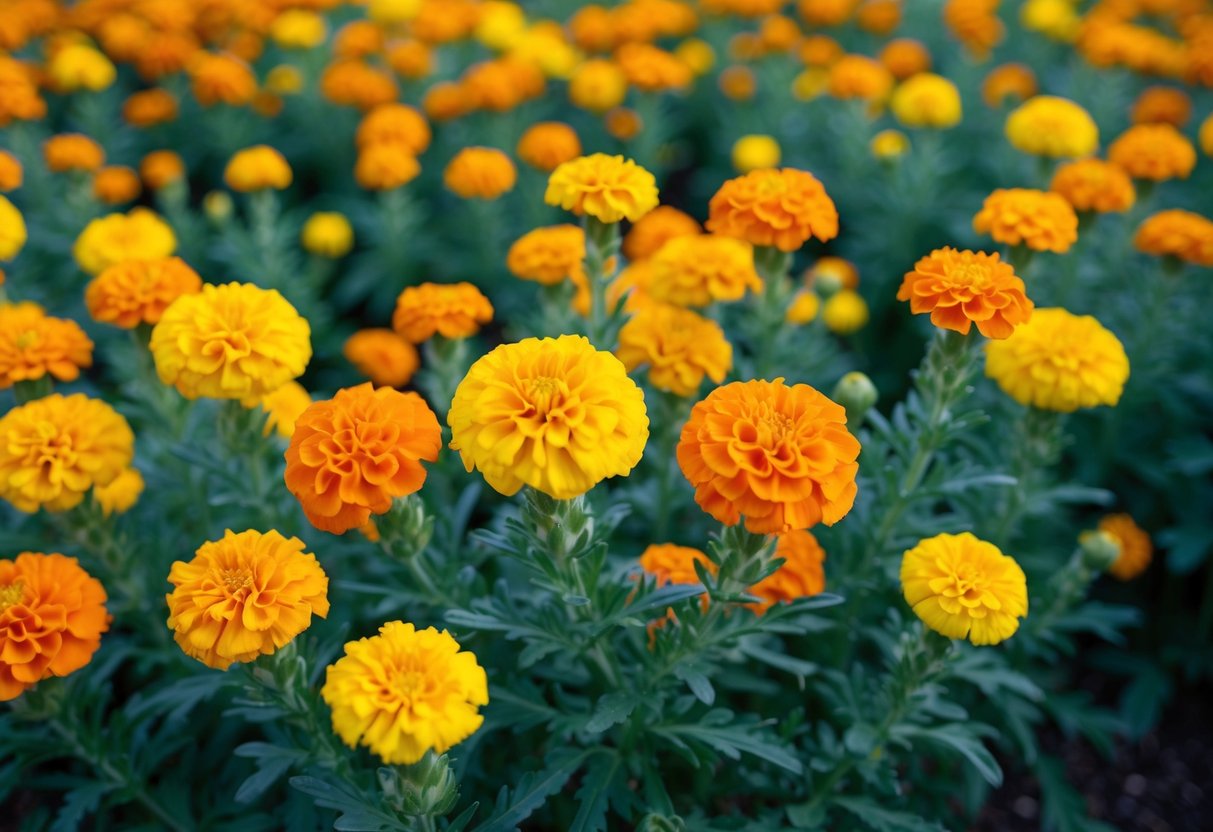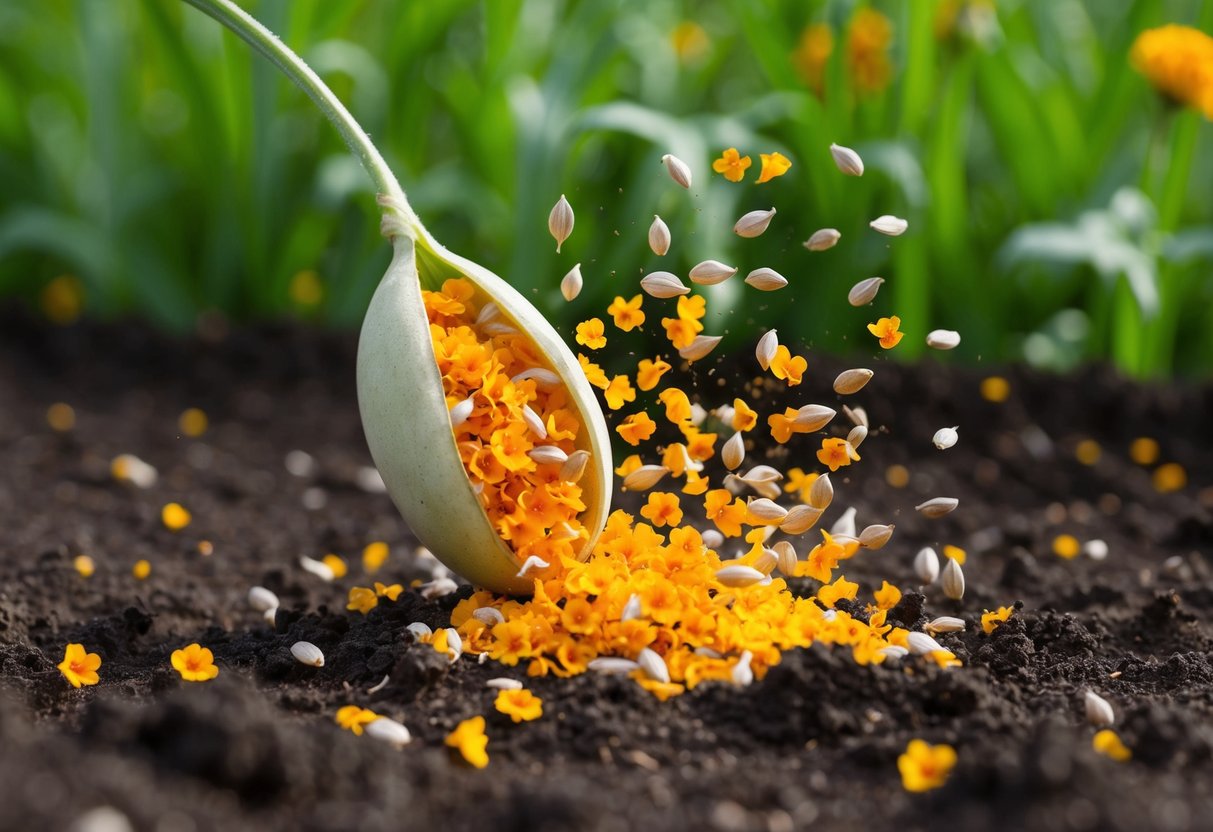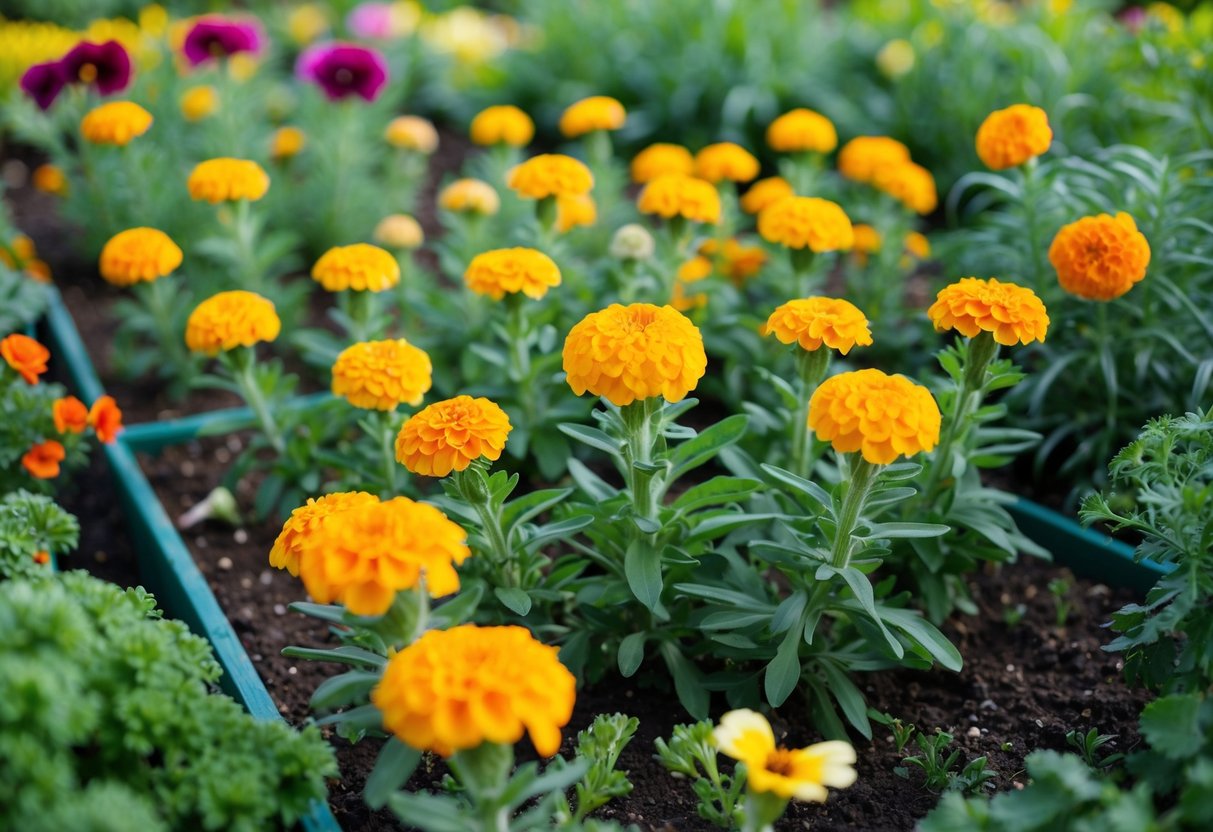Do Marigolds Spread Out? Exploring Their Growth Habits
If you’re considering adding marigolds to your garden, you’re in for a treat. These bright and cheerful flowers are not only easy to grow, but they also have some hidden benefits. Yes, marigolds do spread out, making them an excellent choice for filling garden spaces. Whether in flowerbeds or pots, marigolds can expand and multiply with minimal care.

Marigolds belong to the genus Tagetes and come in various types like French, African, and signet marigolds. Each type has its own growing habits, but what they all share is their ability to adapt and thrive. Once established in your garden, marigolds will naturally spread, filling your space with vibrant colors that attract beneficial insects and deter pests.
These plants are versatile and can fit into many garden designs. While they enjoy plenty of sunlight, they can also handle a bit of shade. By adding marigolds to your garden, you’re inviting a burst of color and practical benefits that can enhance not only your garden’s beauty but also its health. Learn how to make the most out of these amazing plants and enjoy the lively atmosphere they create.
Understanding Marigolds

Marigolds are popular flowers known for their vibrant colors and ease of growth. There are different types that vary in size and appearance. They play important roles in many cultures and belong to a large plant family.
Species Overview
The marigold family includes several species like French Marigolds (Tagetes patula), African Marigolds (Tagetes erecta), and Signet Marigolds (Tagetes tenuifolia). These plants are known for their bright blooms, usually in yellow, orange, and red shades.
African Marigolds, also known as American Marigolds, can grow up to two to three feet tall. They’re ideal for adding height to your garden. On the other hand, French Marigolds are more compact, suited for borders and pots.
Cultural Significance
Marigolds have cultural importance in various parts of the world. In some traditions, they are associated with festivals and celebrations. For example, they are widely used in Mexican Day of the Dead ceremonies to honor loved ones.
In India, marigolds are common in weddings and religious events, known for symbols of purity and positivity. Their bright colors and strong scents often make them a part of spiritual offerings and decorations.
Classification and Types
Marigolds are part of the Asteraceae family, which includes a wide range of flowering plants. You’ll often come across different types like the English Marigold or Pot Marigold (Calendula), although they are not true marigolds. True marigolds belong to the genus Tagetes.
Each type of marigold has its characteristics. For instance, Signet Marigolds are known for edible flowers and delicate foliage, providing a unique choice for gardeners interested in culinary uses. Whether you’re interested in tall, vibrant varieties or compact ones for container gardening, marigolds offer options for every garden.
Cultivation and Care

Marigolds thrive in the right conditions and care. You should pay attention to soil, sunlight, watering, and pruning to keep them healthy and blooming.
Soil and Sunlight Requirements
Marigolds prefer well-draining soil with a pH between 6.0 and 7.0. Neutral soil not only supports growth but also prevents root rot. You should plant them in a location where they can bask in full sunlight, as marigolds need plenty of sunshine. They can tolerate up to 20% shade, but full sun ensures they flourish.
If you’re starting with seeds, ensure they are in the right environment. Seedlings should be spaced well to allow room for growth. If you’re using transplants, plant them in spots with ample sunlight and ensure the soil is not too rich in organic matter. A leaner soil works best.
Watering and Fertilization
These plants are drought-tolerant, which means they don’t need constant watering. However, it’s crucial to water them well when needed. Let the soil dry out between watering sessions, then give them a thorough soak. Be careful not to overwater, especially during hot periods.
For marigolds in containers, choose a soil-based potting mix. It’s essential not to water from above, as this can cause powdery mildew on leaves. Fertilizer is not always needed, but if you decide to use it, a balanced, all-purpose fertilizer works fine. Apply it sparingly to avoid overwhelming the plants.
Pruning and Deadheading
Regular pruning and deadheading ensure that your marigolds stay vibrant and produce more blooms. You should remove spent flowers to encourage the plant to focus energy on new growth. This process is called deadheading and is quite simple. Just pinch the flower head off once it withers.
Pruning keeps your plants tidy. Trim back any leggy growth to help your marigolds maintain a compact shape. This not only makes them look better but also helps prevent any potential disease or pest issues. Keep an eye out for any unhealthy leaves and remove them as needed.
Propagation and Planting

When growing marigolds, consider both starting from seeds and transplanting seedlings. Understanding spacing requirements is key to ensuring your marigolds thrive. These methods help in proper propagation and planting.
Growing From Seeds
Propagating marigolds from seeds is a simple process. Begin by checking your seed packets for detailed instructions. Marigold seeds germinate best in warm temperatures. You can sow them directly into the soil or start them indoors.
Prepare trays with potting soil and plant each seed about a quarter-inch deep. Keep the soil moist but not waterlogged. In about a week or two, you’ll see the seedlings emerge. Once they have a set of true leaves, they’re ready to be moved.
Marigolds can also self-seed, meaning they can drop seeds and grow new plants the following season.
Transplanting Seedlings
When it comes to transplanting marigolds, timing is crucial. Make sure the danger of frost is over since young marigold seedlings are sensitive to cold. Take them out of their nursery containers gently. Loosen the root ball slightly by rolling the pot between your hands to ease the plant out.
Once out, place the seedlings in prepared garden soil. Ensure the roots have enough space to spread. You can use a garden shovel to enlarge the hole if needed. Water the transplanted seedlings well to help them settle in their new home.
Spacing for Healthy Growth
Proper spacing allows marigolds to flourish. Aim for spacing between 8 to 18 inches, depending on the marigold variety you are planting. Smaller varieties need less space, while larger ones require more room to spread.
Planting marigolds too close can lead to overcrowding. This results in poor air circulation and can increase the chance of disease. Marigolds prefer full sun and well-drained soil to grow strong and healthy. Following these spacing guidelines will ensure your marigolds remain vibrant and healthy throughout the growing season.
Challenges and Pests

Growing marigolds can bring beauty to your garden, but they might face some challenges. Diseases and pests can affect their health. Understanding how to handle these can help keep your marigolds thriving.
Disease Management
Marigolds are generally hardy, but they can fall prey to certain diseases. Powdery mildew is one of the common issues. It appears as a white, powdery coating on leaves. To minimize it, make sure your plants have good airflow and avoid overhead watering.
Root rot can also be a problem, caused by overwatering or poorly drained soil. Ensuring well-drained soil is crucial. If you notice wilting or yellowing, it might be an indicator. Keep the soil lightly moist, not soggy, to prevent this issue.
Another disease to watch out for is Alternaria leaf spot, which causes dark spots on the foliage. To control it, regularly clean up fallen leaves and apply appropriate fungicides when needed.
Common Pests and Problems
Pests like aphids and spider mites love marigolds. These pests can cause yellow or brown speckling on the leaves. For aphid infestations, you can spray them with water or use insecticidal soap.
Slugs are another enemy. They munch on leaves, leaving holes. Traps or barriers can keep them at bay. Nematodes might attack roots, leading to poor plant health. Rotating crops and maintaining healthy soil can help manage these pests.
Whiteflies and cabbage worms are also known to impact marigolds. Regular inspection and manual removal of these pests are effective ways to control them. Remember, a vigilant eye and consistent care can lead to a thriving marigold garden.
Companion Planting and Benefits

Marigolds are not just pretty flowers; they play a key role in your garden by helping both vegetables and flowers. With their ability to attract pollinators and repel pests, marigolds make excellent companion plants for various gardens.
Marigolds and Vegetable Gardens
Incorporating marigolds into your vegetable garden can boost plant health and productivity. They work well with many veggies, such as tomatoes, cucumbers, and carrots. Marigolds help deter harmful pests like tomato hornworms and carrot rust flies. Their roots release a substance that can ward off nematodes, which are tiny worms that damage plant roots.
Marigolds do well when planted along garden edges or intermixed with your crops. Their bright blooms can also improve the look of your garden, making it both functional and beautiful.
Attracting Pollinators and Deterrents
Marigolds have a dual role in attracting helpful pollinators like bees and butterflies while keeping away unwanted pests. Their scent serves as a deterrent for insects such as whiteflies and aphids, protecting your plants effectively. Planting marigolds near roses or other flowers that need cross-pollination can enhance growth.
You can place marigolds in an edging fashion around your garden to create a natural barrier. This approach welcomes beneficial bugs and keeps destructive pests at bay, ensuring a thriving garden environment.







